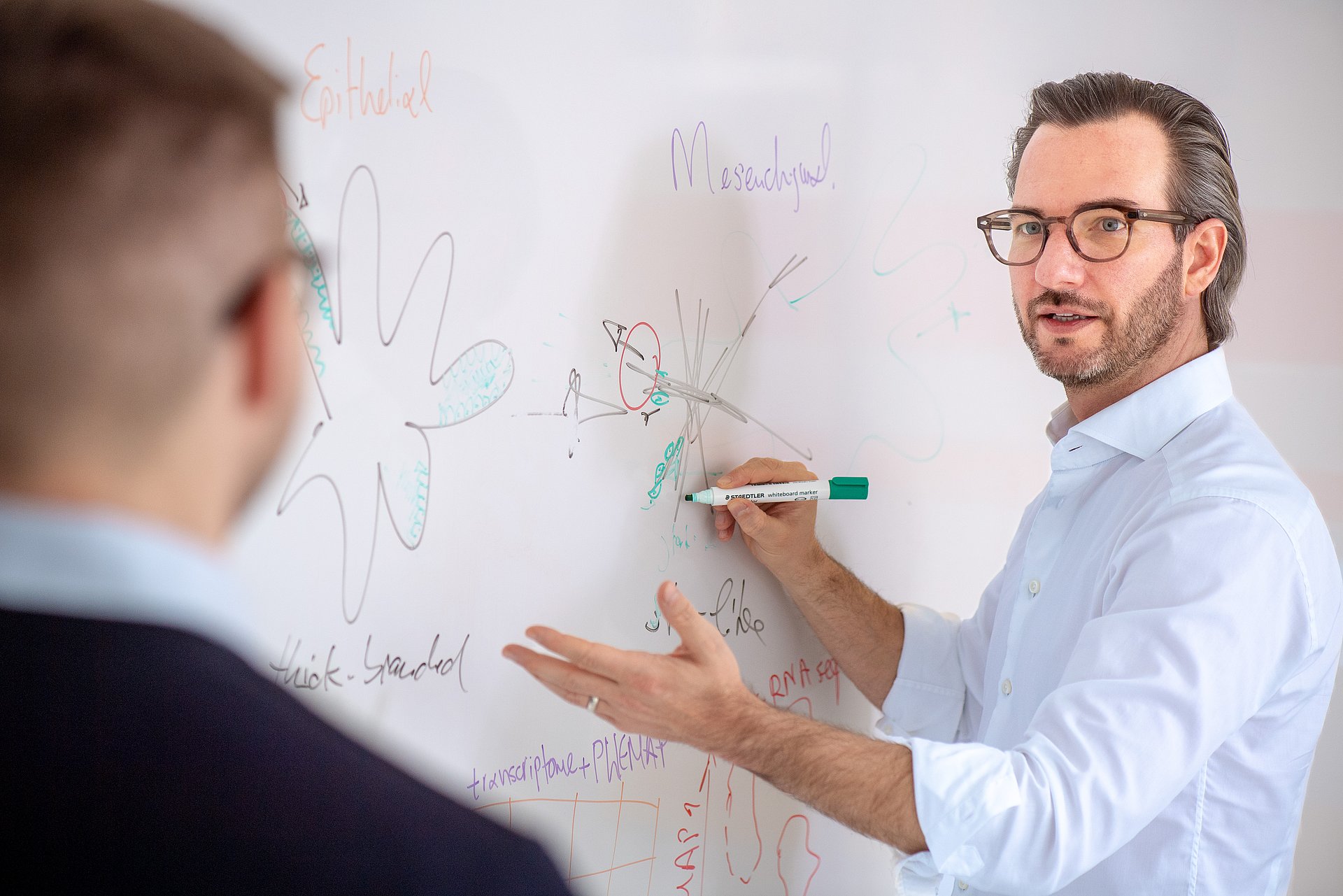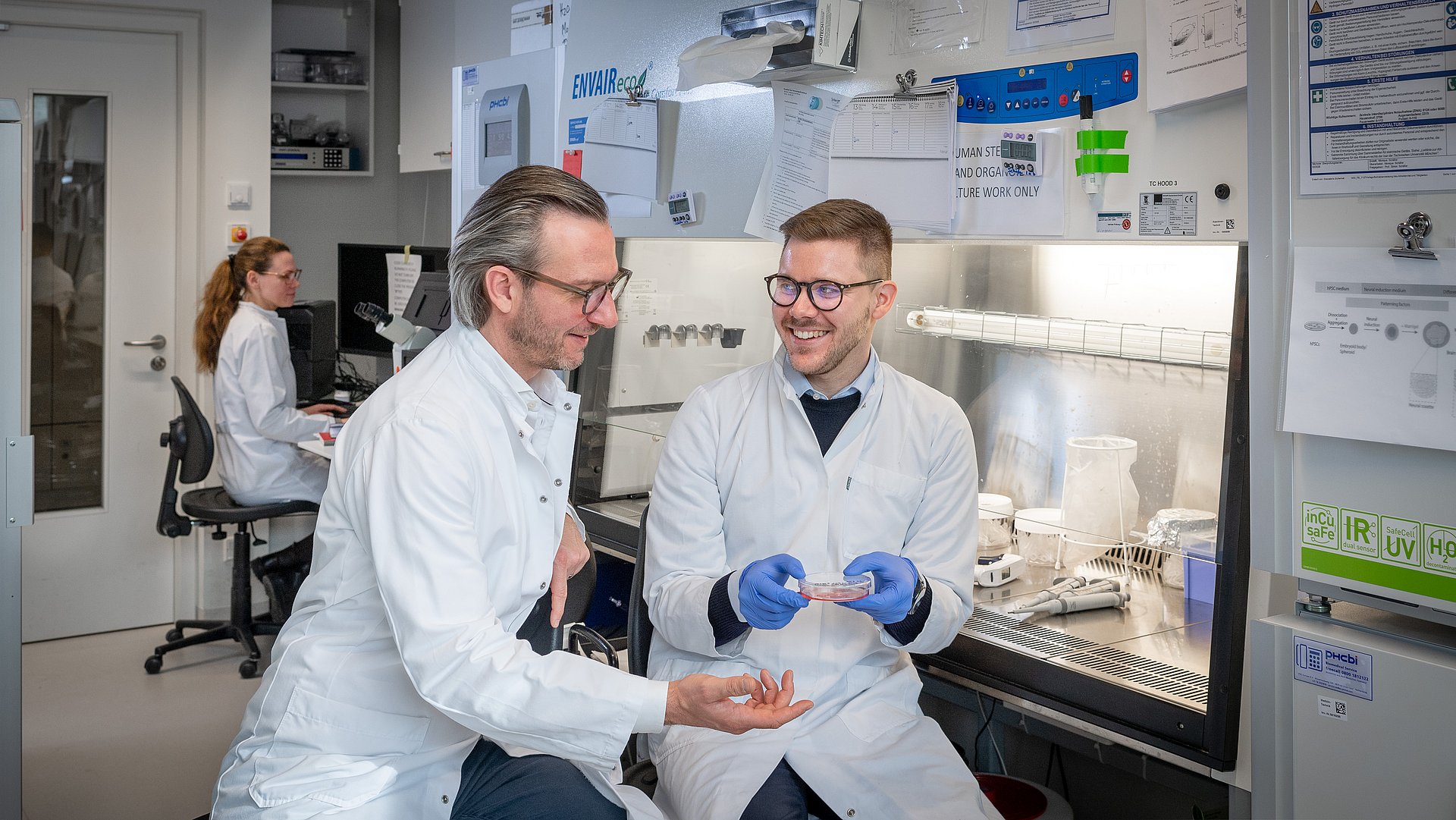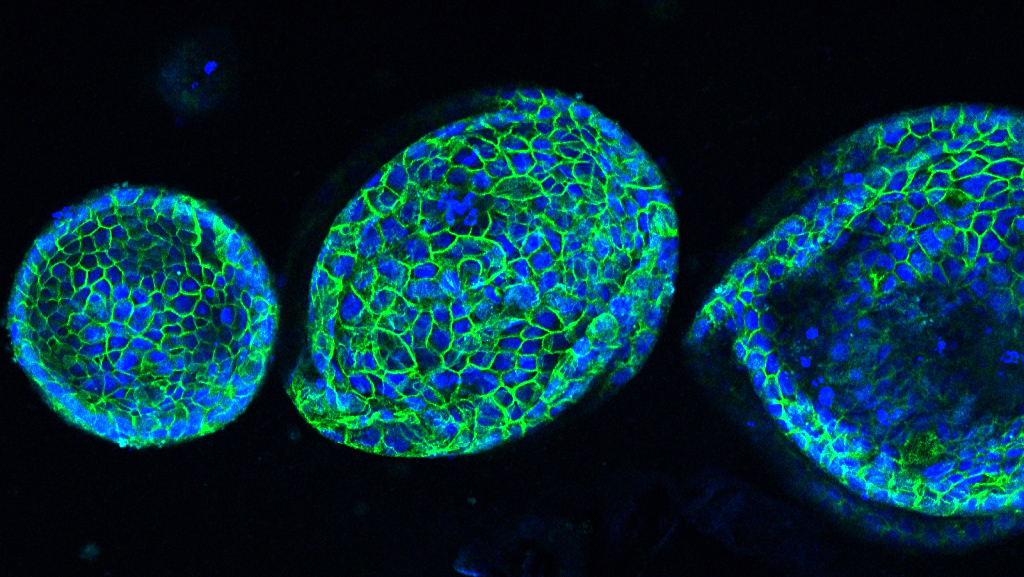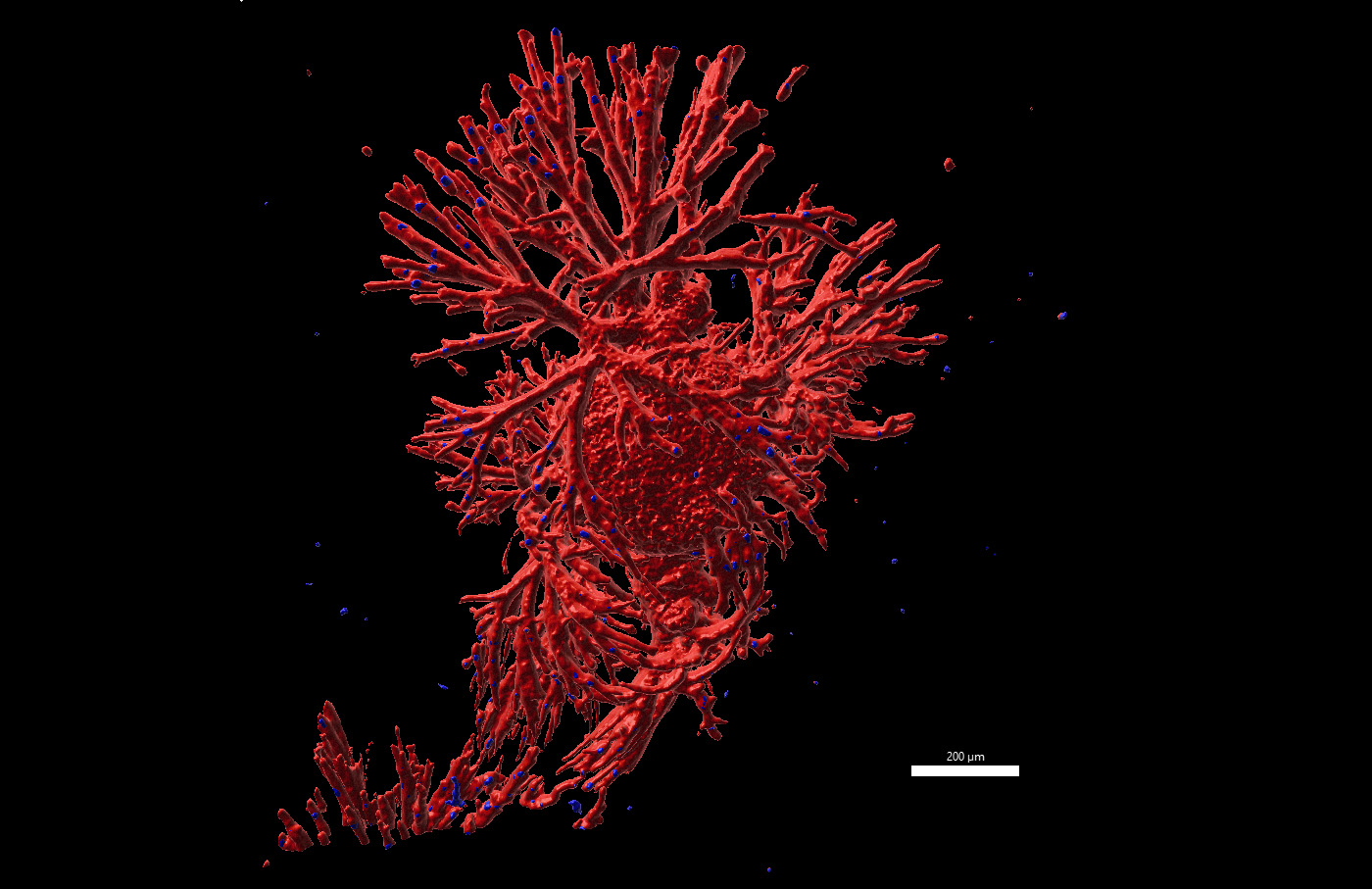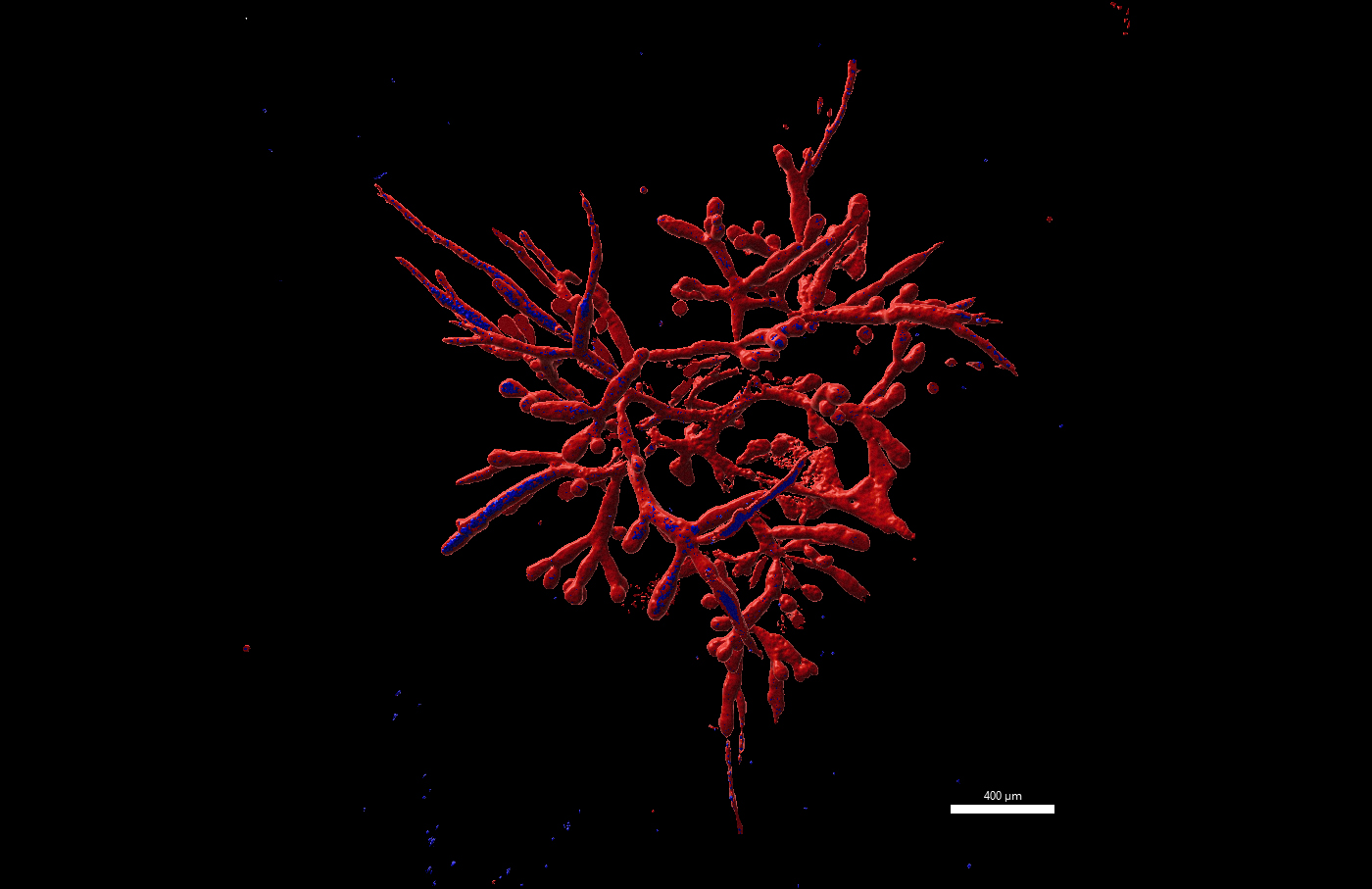Foundation for new cancer treatment strategies
Organoids represent the complex cell landscape of pancreatic cancer
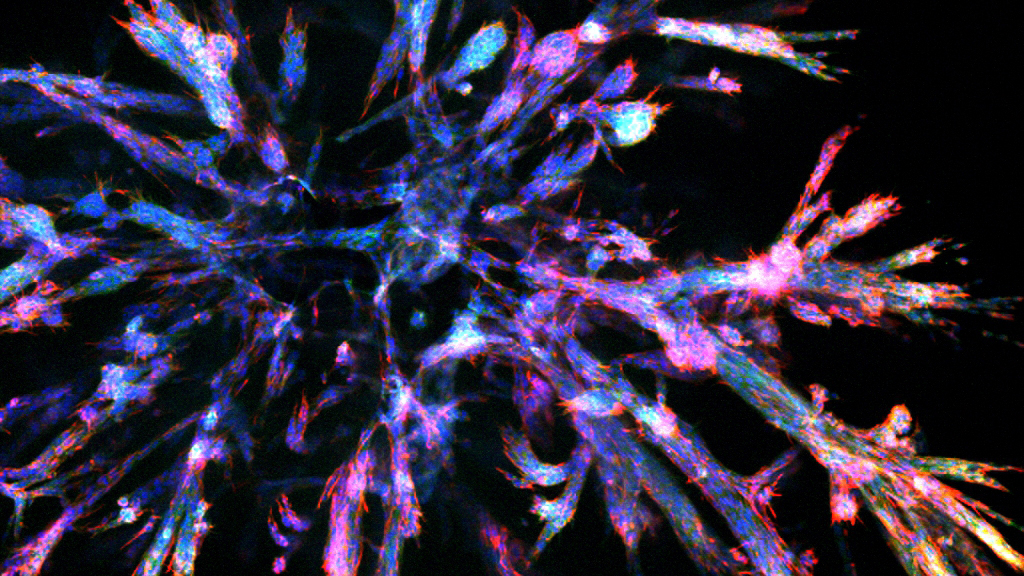
Pancreatic cancer ranks among the most lethal cancers, with an exceptionally high mortality rate. One of the reasons is the lack of efficacious treatments, since different cancer cells within the same tumor can react very differently to one and the same therapy. The cells of a pancreatic cancer tumor are highly diverse not only in terms of their structure, but also in their associated malignant properties, for example how aggressive they are.
Pancreatic cancer cells can be roughly divided into two main subtypes: epithelial and mesenchymal, based on their appearance and their molecular profile. "However, the tumor cells can change their structure and function during the course of the illness. It has been shown previously that a wide range of different manifestations exists within these two main categories. These can vary greatly in their biological characteristics," says Maximilian Reichert, Professor of Translational Pancreatic Cancer Research at the TUM University Hospital Klinikum rechts der Isar.
Complexity of pancreatic cancer reproduced in the laboratory
A team led by Reichert has now, for the first time, reproduced the morphological complexity of pancreatic cancer cell clusters in the laboratory. "Tumor cell clusters in the body are shaped like glands, with many duct-like branches. When individual tumor cells are isolated and used to grow artificial 3D cell clusters in the laboratory, referred to as organoids, the conventional approach produces only spherical like structures. These don't have the same morphology and properties as the tumor nodules in the body," says Aristeidis Papargyriou, the study's lead author. "Now we can generate organoids that greatly resemble the real, branched cell clusters found in the body. This lets us reproduce the complexity of pancreatic cancer in the laboratory for the first time."
Which therapies work? Different organoids react differently
The team used machine learning to categorize the newly grown organoids based on their morphologies in defined groups for further systematic analyses. "We identified different phenotypes within the two subtypes epithelial and mesenchymal. In simple terms, these are groups within the same tumor subtype that differ in their appearance as well as their malignant behavior," says Papargyriou.
Initially, they worked with organoids from mouse tumor cells. "For example, ‘star-like organoids’ are round in the center and highly branched towards the ends, while ‘TEBBO organoids’ can have thick branches with hollow lumen and end-bud formations." Not only do the phenotypes have markedly different appearances, they are also distinct in terms of the way they proliferate, how their metabolisms work, and how they behave when deprived of oxygen, among other things. In particular, they react differently to treatments: Thus, for example, the star-like organoids were resistant to the chemotherapeutic used in the study, but were highly affected by irradiation.
The team then succeeded in applying the technology to tumor cells taken from patients with pancreatic cancer. In the laboratory, they generated several phenotypes from these cells and tested them against treatments to identify weaknesses of cancer cells.
Approaches for future therapies
The new organoids could be beneficial in the development of new therapies. Physicians could apply therapies on a more individual and targeted basis when they know the specific phenotypes occurring in a given patient and how these react to various treatments.
The researchers are also pursuing a second approach in order to develop more effective treatments based on the knowledge gained. "Fighting several tumor phenotypes at the same time is very difficult. If we treat them all with the same medication, they may react in completely distinct ways or avoid the treatment by transforming into other phenotypes and becoming resistant to therapy," says Reichert. "That's what gave us the idea of first reducing the number of different phenotypes within a tumor until, in the ideal case, only a small number are left which no longer change. Then it would be possible in a second step to develop a therapy for these remaining few phenotypes and combat them specifically."
The researchers tested this approach on the newly developed organoids, adding various different drugs. Some phenotypes were suppressed, while others transformed into related phenotypes or developed into new ones. As intended, in the end only two main phenotypes remained which did not change any further. In the future, the researchers plan to find substances which can be used to treat these persisting phenotypes, and to further develop the approach.
A. Papargyriou, M. Najajreh, D. Cook, C. Maurer, S. Bärthel, H. A. Messal, S. K. Ravichandran, T. Richter, M. Knolle, T. Metzler, A. R. Shastri, R. Öllinger, J. Jasper, L. Schmidleitner, S. Wang, C. Schneeweis, H. Ishikawa-Ankerhold, T. Engleitner, L. Mataite, M. Semina, H. Trabulssi, S. Lange, A. Ravichandra, M. Schuster, S. Mueller, K. Peschke, A. Schäfer, S. Dobiasch, S. E. Combs, R. M. Schmid, A.R. Bausch, R. Braren, I. Heid, C. H. Scheel, G. Schneider, A. Zeigerer, M. Lücken, K. Steiger, G. Kaissis, J. van Rheenen, F. J. Theis, D. Saur, R. Rad, M. Reichert: „Heterogeneity-driven phenotypic plasticity and treatment response in branched-organoid models of pancreatic ductal adenocarcinoma”; Nature Biomedical Engineering (2024); DOI: 10.1038/s41551-024-01273-9
Related publication on pancreatic tumor organoids:
Randriamanantsoa, S., Papargyriou, A., Maurer, H.C. et al.: “Spatiotemporal dynamics of self-organized branching in pancreas-derived organoids”. Nat Commun 13, 5219 (2022).
DOI: 10.1038/s41467-022-32806-y
- High resolution images
- More videos
- Involved in the project are: Technical University of Munich (TUM), Munich Center for Machine Learning (MCML), Helmholtz Munich, University of Ottawa, German Cancer Research Center (DKFZ) and German Cancer Consortium (DKTK), The Netherlands Cancer Institute, German Center for Diabetes Research (DZD), Ludwig-Maximilians-University Munich (LMU), Ruhr-University Bochum, University Medical Center Göttingen, Heidelberg University, Imperial College London
- Organoid research is a key research area at TUM. With the construction of the TUM Center for Organoid Systems (COS) at the Garching Research Center, TUM is developing a facility unlike any in Europe. It will utilize TUM’s status as a technical university with its own university clinic to transfer this ultramodern technology into medical-clinical applications. Prof. Maximilian Reichert is a member of the COS Board of Directors.
- Prof. Maximilian Reichert and the co-authors Prof. Andreas Bausch, Prof. Stefanie E. Combs and Prof. Fabian Theis are Principal Investigators at the Munich Institute of Biomedical Engineering (MIBE), an Integrative Research Institute at TUM. At MIBE, researchers specializing in medicine, the natural sciences, engineering, and computer science join forces to develop new methods for preventing, diagnosing or treating diseases. The activities cover the entire development process – from the study of basic scientific principles through to their application in new medical devices, medicines and software.
- Prof. Maximilian Reichert heads the Interdisciplinary Tumor Outpatient Clinic of the Gastrointestinal Tumor Centre at the Comprehensive Cancer Center Munich at TUM and treats patients with pancreatic cancer. He and his team conduct research at the TUM University Hospital Klinikum rechts der Isar, Klinik und Poliklinik für Innere Medizin II, Gastroenterology, Translational Pancreatic Cancer Research Center
- The professorship of Translational Pancreatic Cancer Research is part of the TUM School of Medicine and Health.
- The project was funded by: the German Cancer Aid, the German Research Foundation (DFG), the Bavarian Ministry of Economic Affairs (EISglobe), the Federal Ministry of Education and Research (BMBF; projects SATURN3, QuE-MRT, FAIRPACT), the Bavarian Center for Cancer Research (BZKF), the German Cancer Consortium (DKTK; Strategic Initiative Organoid Platform).
Technical University of Munich
Corporate Communications Center
- Carolin Lerch
- presse@tum.de
- Teamwebsite
Contacts to this article:
Prof. Dr. Maximilian Reichert
Technische Universität München
Professor of Translational Pancreatic Cancer Research
maximilian.reichert@tum.de
